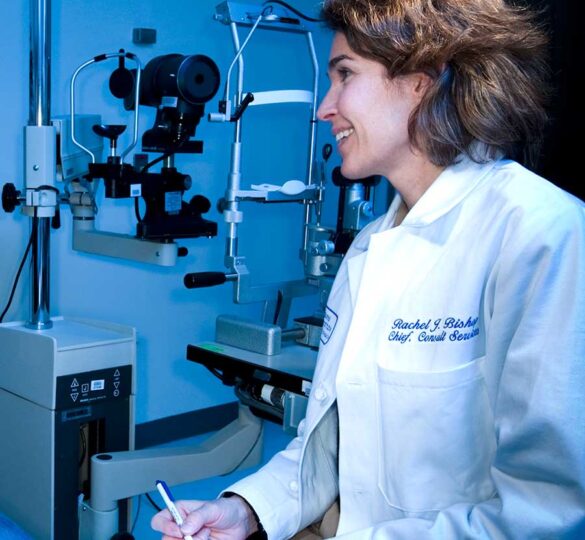Using Cataract Surgery to Treat Glaucoma Could Be the Next Step to a More Effective Treatment for PCAG
There is evidence that the lens extraction and replacement method used for cataract treatment may be a viable option for primary closed-angle glaucoma as well.

The two leading causes of blindness across the world are cataracts and glaucoma. They are both age-related degenerative eye diseases that are often seen in the same patients, either as part of the same aging processes, or as a rare syndrome that affects younger patients. They can both be treated with eye drops and surgery; but only cataracts can be cured. At least, that is the conventional wisdom, but it turns out that the cure for cataracts may also be an excellent treatment option for primary closed-angle glaucoma.
Current Surgical Treatments
The traditional surgical option for primary closed-angle glaucoma (PCAG) is usually laser peripheral iridotomy, which opens the drainage pathways to allow fluid to drain. If this fails, it is followed by a trabeculectomy, which creates an opening in the wall of the eye that allows a slow drainage of fluid. These surgeries generally require further medical management with eye drops to control fluid pressure.These treatments are not always successful, but thanks to researchers at Queen’s University in Belfast, Ireland, there is evidence that the lens extraction and replacement method used for cataract treatment may be a viable option for PCAG as well. In fact, the researchers working with teams from St. Andrews and Aberdeen Universities discovered that standard cataract surgery is actually more effective than current glaucoma procedures.
The EAGLE Trial
The Effectiveness in Angle-closure Glaucoma of Lens Extraction (EAGLE) randomized controlled trial was conducted between 2009 and 2011 in thirty hospitals across five countries. They included 419 participants aged 50 years or older, who had received a recent diagnosis of PCAG with intraocular pressure 30mm Hg or higher (n = 155). None of the participants had cataracts.The participants were split into an experimental group that was treated with clear-lens extraction surgery, and a control group that received traditional surgery. Both groups were followed for three years and then brought in for a follow-up. Here are the results:
- The experimental group, which underwent clear-lens extraction, had a higher mean health status score, compared with that for the standard care group.
- The health status score increased over time in the clear-lens extraction group, but decreased for those in the standard care group.
- Mean intraocular pressure was lower in the experimental group compared with the control group.
- Far fewer participants in the experimental group required further treatment to control their fluid pressure, either through medications or more surgery.
- The patients who had the cataract surgery enjoyed overall better vision as compared with patients in the standard care control group.
There were some complications, with 75 of the patients in the experimental group and 25 from the control group experiencing minor complications. But aside from these, the trial offered a potential step toward curing PCAG. Ultimately, the study authors concluded that in spite of these, the trials demonstrated that initial clear-lens extraction offered better clinical outcomes at lower costs.
Looking Forward
As promising as these results are, further research is needed. According to Carlo E. Traverso, MD, the findings of this work are both clinically relevant and have widespread practical implications, but do not yet sufficiently justify using clear-lens extraction to treat all patients with PCAG. Meanwhile, Andrew C.S. Crichton, MD, and Bryce A. Ford, MD, said in their recent article on cataract surgery in glaucoma patients: “Every patient represents a different set of circumstances with many variables, including type of glaucoma, severity of glaucoma, compliance and tolerance of medical management, need for quick visual rehabilitation, and availability of operating room resources.”
References:
1 “Cataract-glaucoma.” RightDiagnosis.com. N.p., n.d. Web. 21 Mar. 2017.
2 Azuara-Blanco, A, Burr, J, et al, and the EAGLE study group. “Effectiveness of early lens extraction for the treatment of primary angle-closure glaucoma (EAGLE): a randomised controlled trial.” Lancet. 2016; 388: 1389 – 1397.
3 Traverso, Carlo E. “Clear-lens extraction as a treatment for primary angle closure.” Lancet. 2016; 388: Issue 1352 – 1354.
4 Crichton, Andrew C.S., MD, FRCS, and Bryce A. Ford, MD, FRCS. “Cataract Surgery in the Glaucoma Patient.” Medscape . N.p., n.d. Web. 21 Mar. 2017.
First posted April 25, 2017